Guide: Diving Milne Bay by Don Silcock
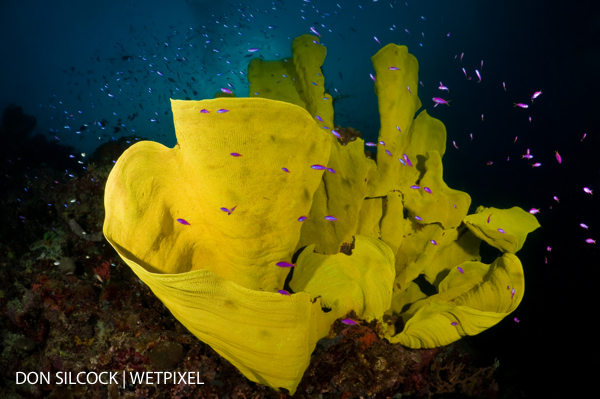
Diving Milne Bay – An Overview
By Don Silcock
Milne Bay was what put Papua New Guinea on the global scuba diving map back in the mid 1980s, when Bob and Dinah Halstead built their liveaboard dive boat the MV Telita and started exploring this very special part of the country.
However. the area of PNG referred to as “Milne Bay” is somewhat confusing because, in reality, there are actually two Milne Bays…
The first is the large, sheltered bay on the south-eastern tip of the main island of New Guinea that is named after the British Admiral Sir Alexander Milne. Then there is the much larger province of Milne Bay that stretches out over a huge area covering almost 270,000 km².
Milne Bay itself was a major Allied air-base during WWII and the location of an epic battle with the invading Japanese forces in 1942 that is hailed as the first time the seemingly invincible Imperial forces were decisively defeated.
Milne Bay Province is roughly the size of New Zealand, but only about 5% of that area is dry land, and the rest are the waters surrounding the 600+ islands that make up the province.
Those islands fall in to four main groups – the Trobriands, the D’Entrecasteaux Islands, Woodlark Island and the Louisiade Archipelago.
How to get to Milne Bay
The only really viable option for getting to Milne Bay is by air from Port Moresby to Alotau, the provincial capital.
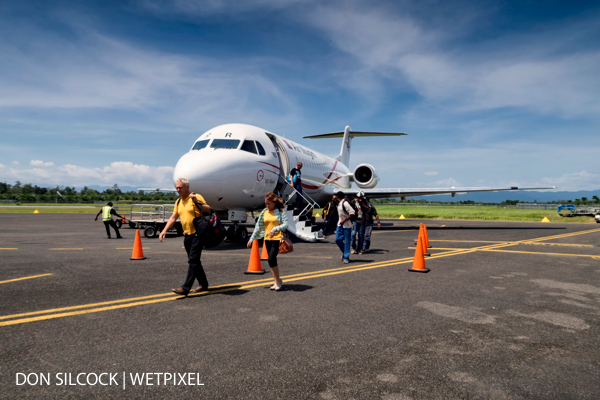
Although only 350km apart, the rugged and mountainous terrain of south-east New Guinea island means that the sole road along the south coast stops at a village called Kupiano, roughly half-way between Port Moresby to Alotau. An alternative option is the once-per-week ferry from Port Moresby to Alotau, but it’s not for the feint hearted…
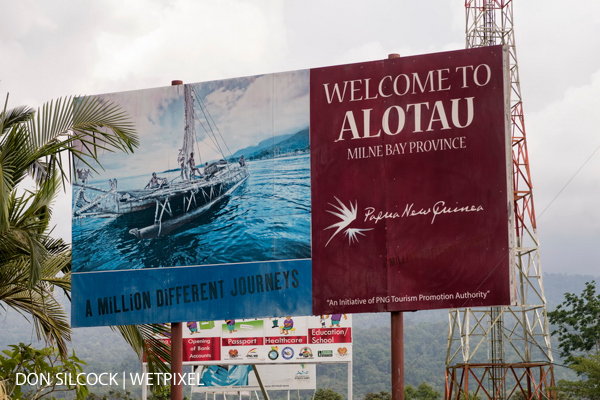
Alotau’s airport is called Gurney (GUR) and is served on a regular basis by both Air Nuigini and Airlines PNG (APNG).
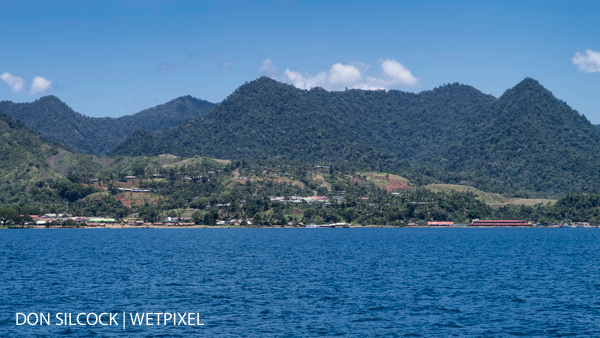
Where to Stay
If you are going to Milne Bay for scuba diving, then you will have already decided on a resort-based trip or one on a liveaboard and so where to stay while diving is somewhat of a moot point…
But there are other things to see and do in Milne Bay besides scuba diving and there are a few options for where to stay while doing that.
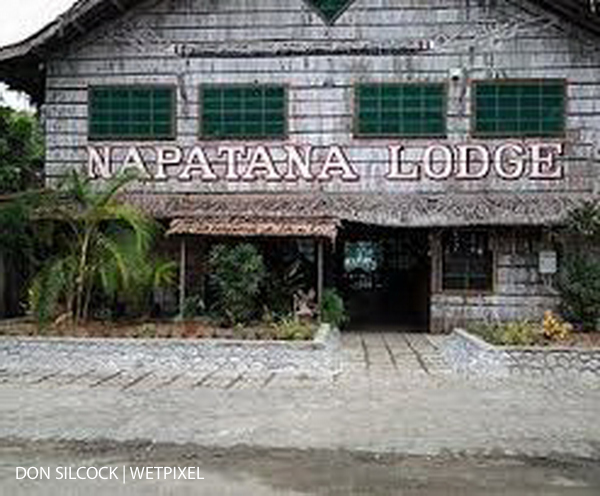
If you are looking for a more traditional experience that will give you a better understanding of Milne Bay, then look in to Napatana Lodge run by the highly respected and apparently very forthright Gretta Kwasnicka-Todurawai.
I have yet to meet her, but Gretta is known as a fantastic source of local and provincial information who has an extensive network of contacts across Milne Bay Province and will go out of her way to help her guests.
Flinders University in Adelaide worked through Gretta to produce a series of information brochures on Milne Bay Province that provide some great insight in to the region, how to explore it, what you will see and where to stay.

If you are interested in something like that, Gretta can organize the whole thing for you. But if you want more mainstream accommodation there are two options starting with the Alotau International Hotel which is right in the centre of town and offers all the modern conveniences.
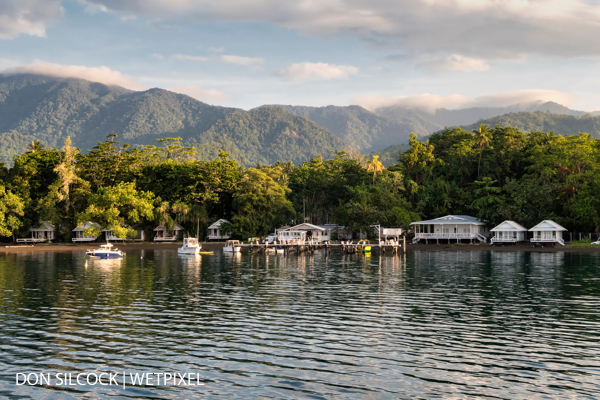
An interesting and very viable alternative to the International Hotel is the Driftwood Resort which is in a very scenic spot right on the beach just outside of Alotau.
Logistics in Milne Bay
The Papua New Guinea currency is the Kina and $1 USD will buy you about three of them. Most visitors to PNG get whatever Kina they think they will need at the ATM or currency exchange after arrival at the international airport in Port Moresby.
There are a couple of ATM’s available at the banks in Alotau, but once you are out in Milne Bay Province you will need cash.
Things to do in Milne Bay
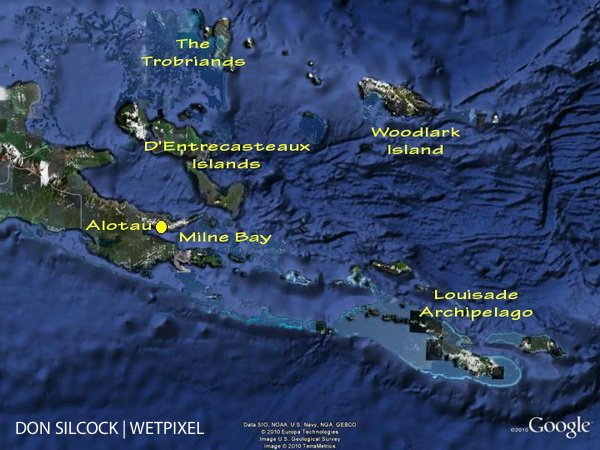
Milne Bay Province is a quiet and peaceful place that is widely considered to be one of the safest provinces in PNG.
The provincial capital of Alotau is the solitary town of any size — but even then, its population is only about 15,000…

The highlights of Milne Bay are to be found out on the numerous islands that make up the province and many of the villages on those islands have an interesting matrilineal culture, where the women own the land and take a strong role in the overall community.
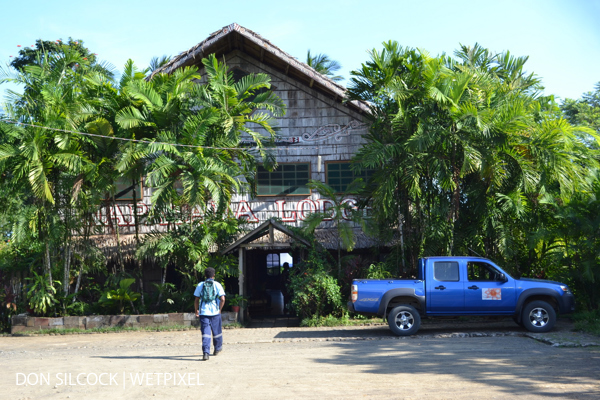
The province was the first in Papua New Guinea to embrace community-based ecotourism and a village guest-house network was established across several of the main islands which allows visitors to experience those local cultures. Gretta Kwasnicka-Todurawai played a key role in setting up that network and will help visitors with guest house bookings and associated logistics.
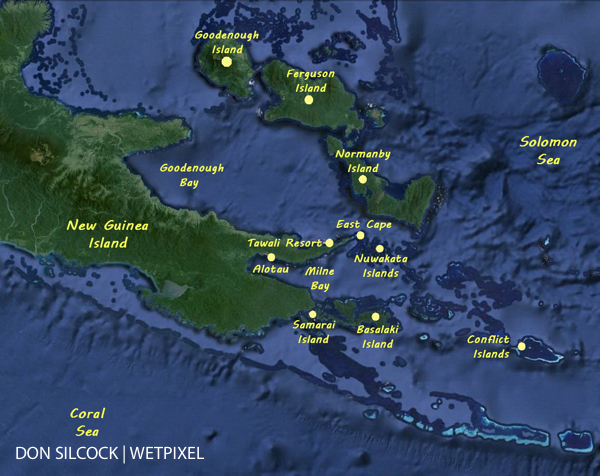
Scuba Diving in Milne Bay
There are two main options for diving Milne Bay Province – either you go for liveaboard based diving, which will enable you to experience the remoter locations such as the East Cape Reefs and Nuwakata Islands in northern Milne Bay, or the sites around Samarai Island and the China Strait in the South.
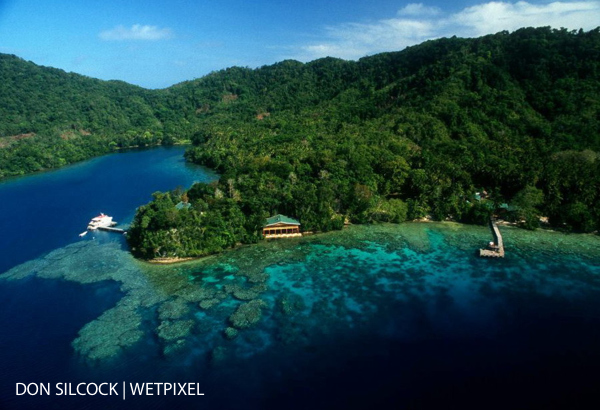
Or you can opt for land-based diving at Tawali, on the North coast of Milne Bay, which has the advantages of being a dedicated dive resort which is fairly close to Alotau and the airport, plus there is easy access to the numerous excellent dive sites on the north coast.
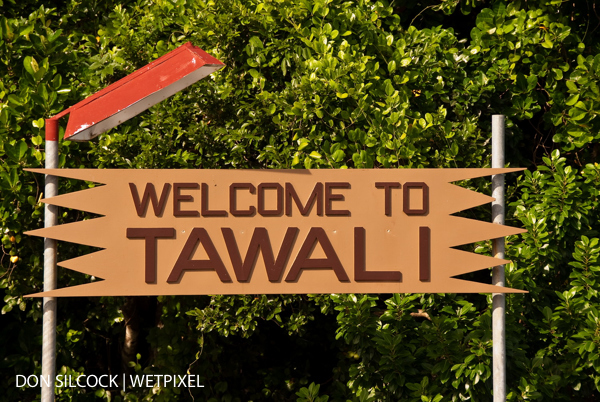
Tawali Dive Resort
Tawali is perched on a limestone headland on the Solomon Sea side of the peninsular that forms the North coast of Milne Bay.
The main lodge and accommodation are up on the limestone headland, surrounded by dense rainforest and overlooking the resort’s house reef and main jetty, while to the West is a large bay where the service area for the resort is located.
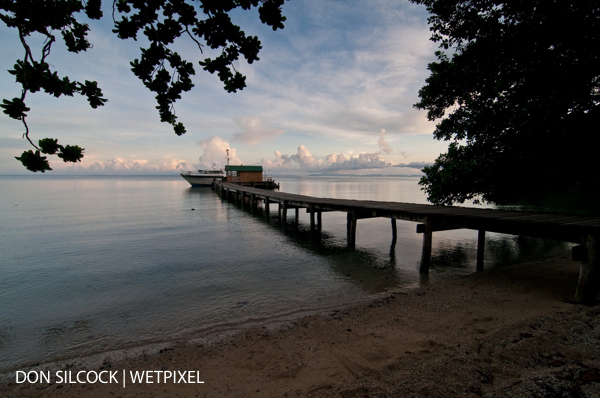
Arrival at the resort is via boat at the main jetty and a wooden boardwalk leads you up to the entrance of the lodge which hosts the reception area, the restaurant, a small bar and the large observation deck overlooking the bay. Covered walkways lead from the main lodge to the individual guest bungalows and then around the headland to the service area.
There are numerous excellent dive sites on the North coast and Tawali dives them all regularly using its day boats – so you go out in the morning and come back later in the day depending on how many dives you are doing.
Liveaboard Diving
There are two liveaboard dive boats based in Milne Bay plus there are another two that operate there at certain times of the year.

MV Chertan, which is based in Alotau, is owned and operated by Rob van der Loos who has been diving Milne Bay Province for nearly 35 years. Rob probably knows Milne Bay better than than any other single individual, plus he is a really great guy who goes out of his way to do everything possible to make your trip successful.
Chertan has itineraries that cover the southern area of Milne Bay around Samarai Island and the China Strait, the northern around East Cape and Nuwakata Islands plus the north coast around Tawali and Normanby Island.
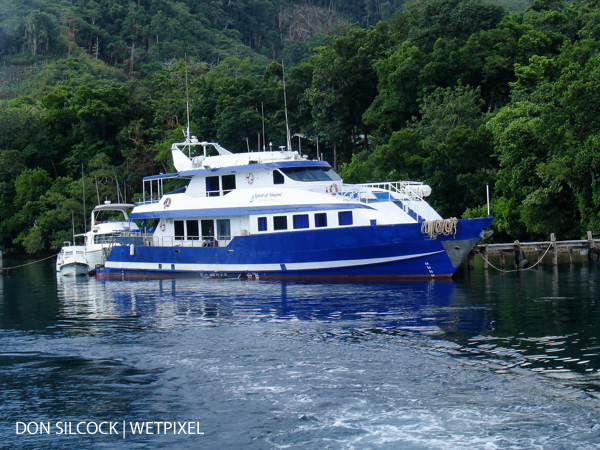
MV Spirit of Niugini is based from Tawali and operates four distinct itineraries that all start and finish at the resort, with the second one providing a pretty special opportunity to dive the B-17F Black Jack wreck at Boga Boga on Cape Vogel:
- Tawali – Conflicts Group, Samarai, Nuwakata Islands, East Cape Reefs – Tawali
- Tawali – Cape Vogel, Northern Nuwakata Islands, East Cape Reefs – Tawali
- Tawali – East Cape Reefs, Nuwakata, Ferguson + Normanby Islands – Tawali
- Tawali – Samarai, Nuwakata Islands, East Cape Reefs – Tawali
The other two boats that operate periodically in Milne Bay are the MV Golden Dawn and the MV Febrina.
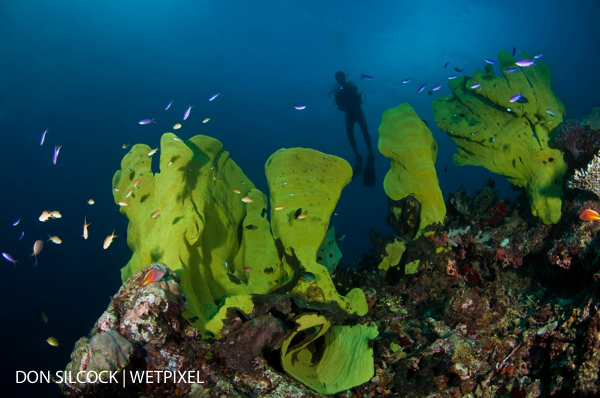
When to Dive Milne Bay
Milne Bay is an all-year round destination as the shape of the bay itself and the many islands of the province mean that sheltered locations can always be found.
But to dive Milne Bay at its very best, you should visit from November through to late January as that is the dry season for that part of Papua New Guinea and the minimal run-off from the rivers and streams means that underwater visibility can be exceptional
About the Author
Don Silcock is an Australian based in Bali and has dived many of the best locations across the Indo-Pacific. If you are interested in learning more about Milne Bay, check out the Complete Guide on his website.